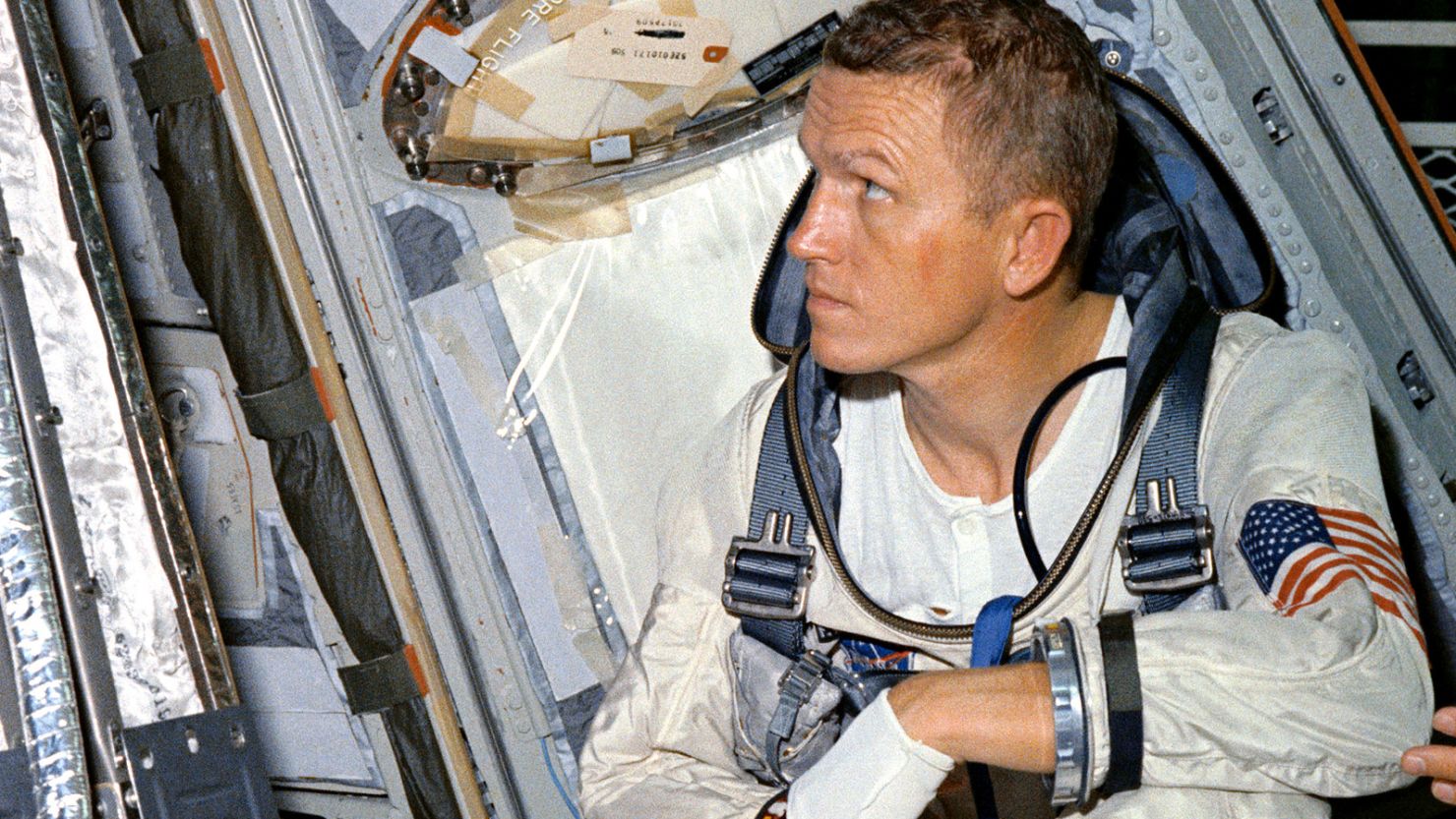Sign up for CNN’s Wonder Theory science newsletter. Explore the universe with news on fascinating discoveries, scientific advancements and more.
Apollo astronaut Col. Frank Borman, who commanded the first mission to orbit the moon, has died in Billings, Montana, NASA announced. He was 95.
“Today we remember one of NASA’s best. Astronaut Frank Borman was a true American hero. Among his many accomplishments, he served as the commander of the Apollo 8 mission,” said NASA Administrator Bill Nelson Thursday in a statement.
Borman died November 7, according to the statement.
During the Apollo 8 mission in 1968, Borman and his crewmates — Jim Lovell and William Anders — became the first people to orbit the moon and witness “Earthrise.” For the first time, the crew snapped a photograph of our planet as it rose above the desolate, scarred lunar surface, resulting in an iconic photo that has left an indelible mark on public consciousness.

By Christmas Eve that year, the Apollo 8 crew dispatched a message back to Earth.
“This is Apollo 8 coming to you live from the moon,” Borman announced after activating a small hand-held TV camera and showing viewers what the moon looked like from space.
Borman and his crewmates then shared lines from the Bible’s Book of Genesis, with Borman beginning: “We are now approaching lunar sunrise and for all the people back on Earth, the crew of Apollo 8 has a message that we would like to send to you. ‘In the beginning, God created heaven and Earth. …’”
Later, in an oral history, Borman recalled his Christmas Eve experience, saying it
had a great effect … for me,” according to NASA.
“Because of the wonderment of it and the fact that the Earth looked so lonely in the universe. It’s the only thing with color,” Borman said. “All of our emotions were focused back there with our families as well. So that was the most emotional part of the flight for me.”
Borman, an Air Force fighter and test pilot, joined NASA’s second astronaut class in 1962.

Before the Apollo 8 mission, he served on Gemini 7, which spent 14 days in orbit around Earth and — for the first time — conducted a close rendezvous in space, closing in within just a few feet of the Gemini 6 spacecraft, according to Nelson’s statement.
In 1967, Borman was a member of the Apollo 204 review board, which investigated a fire that killed three astronauts on Apollo I, according to a NASA biography. Borman would later lead the team that reengineered the Apollo spacecraft.
Borman continued his aviation work following his NASA career as the CEO of Eastern Airlines, according to the statement.
His death follows that of Apollo astronaut Thomas K. Mattingly II, who died October 31 at the age of 87.




